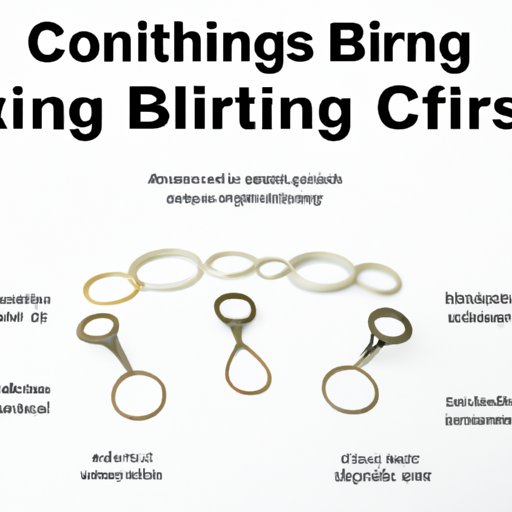Introduction
A birth control ring is a type of hormonal contraception that is inserted into the vagina and left in place for 21 days before being removed for 7 days. It works by releasing hormones into the body which prevent the release of an egg from the ovaries and thicken the cervical mucus, making it more difficult for sperm to reach an egg. Birth control rings are an effective form of contraception, with a typical use failure rate of less than 1%.
It is important to understand both the benefits and risks associated with using a birth control ring. This article will explain the basics of how a birth control ring works, examine the advantages and disadvantages of using one, describe the different types of rings available, and discuss the cost of purchasing a birth control ring.

Explaining the Basics of How a Birth Control Ring Works
A birth control ring is typically made of flexible plastic and is about two inches in diameter. It is inserted into the vagina and then left in place for three weeks. During this time, the ring releases hormones into the bloodstream which work to prevent pregnancy. The hormones released by the ring are progestin and ethinyl estradiol, which are similar to the hormones found in combination birth control pills.
After the three weeks, the ring is removed for one week. During this week, women may experience breakthrough bleeding, which is normal. After the seven days are up, a new ring is inserted. It is important to remember to replace the ring on time in order to maintain its effectiveness.
Examining the Benefits and Risks of Using a Birth Control Ring
There are several advantages associated with using a birth control ring. It is convenient because it only needs to be replaced once a month, and it is easy to insert and remove. It is also very effective at preventing pregnancy, with a typical use failure rate of less than 1%. Furthermore, it can help reduce acne and can even be used to treat certain menstrual problems such as painful periods or heavy bleeding.
However, there are some risks associated with using a birth control ring. These include an increased risk of blood clots, stroke, and heart attack. Women who smoke, are over 35, or have certain medical conditions such as high blood pressure or diabetes should talk to their doctor before using a birth control ring. In addition, some women may experience side effects such as nausea, headaches, breast tenderness, and mood changes.

Describing the Various Types of Birth Control Rings Available
There are several types of birth control rings available, each with its own benefits and risks. The most common type is the non-biodegradable ring, which is made of plastic and must be disposed of after use. There are also biodegradable rings, which are made of materials that will break down in the body over time. Finally, there are disposable rings, which are designed to be used once and then thrown away.
The benefits and risks associated with each type of ring vary. Non-biodegradable rings are the most affordable option, but they can cause irritation if left in the body too long. Biodegradable rings are more expensive but are less likely to cause irritation. Disposable rings are the most convenient option, but they are also the most expensive.

Discussing Questions to Ask a Healthcare Provider About Birth Control Rings
It is important to speak to a healthcare provider about any questions or concerns you may have about using a birth control ring. Some questions you may want to ask include: What are the benefits and risks of using a birth control ring? What are the different types of birth control rings available? What is the best type of birth control ring for my needs? Are there any special considerations I should be aware of when using a birth control ring?
Breaking Down the Cost of Birth Control Rings
The cost of a birth control ring varies depending on the type and brand chosen. On average, a non-biodegradable ring costs between $15 and $50 per month, while a biodegradable or disposable ring may cost between $30 and $90 per month. Some health insurance plans may cover the cost of birth control rings, but it is important to check with your plan to see what is covered.
In addition to the cost of the birth control ring itself, there may be other fees associated with its use. For example, there may be a fee for the initial doctor’s visit, as well as additional fees for follow-up visits. It is important to factor these costs into your budget when considering the use of a birth control ring.
Conclusion
A birth control ring is an effective form of contraception that can be used to prevent pregnancy. It works by releasing hormones into the body which prevent the release of an egg from the ovaries and thicken the cervical mucus. There are several benefits associated with using a birth control ring, but there are also potential risks and side effects that should be discussed with a healthcare provider. There are various types of birth control rings available, and the cost of purchasing and using one can vary depending on the type chosen.
It is important to speak to a healthcare provider about any questions or concerns you may have about using a birth control ring. They can provide information about the benefits and risks associated with using a birth control ring, as well as the various types available and their associated costs.
(Note: Is this article not meeting your expectations? Do you have knowledge or insights to share? Unlock new opportunities and expand your reach by joining our authors team. Click Registration to join us and share your expertise with our readers.)
